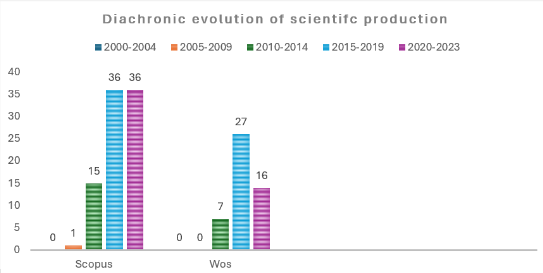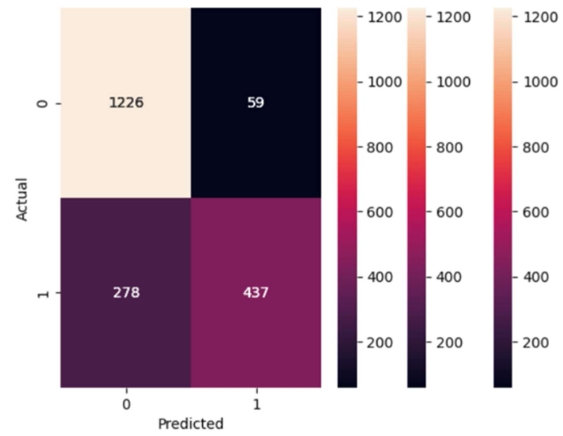Language teacher emotional intelligence: A scoping review
Abstract
The current study reviewed and synthesized empirical research on foreign/second language teacher emotional intelligence (EI) using a scoping review approach. Specifically, 15 articles published between 2018 and 2024 were included and analyzed with a particular emphasis on the theoretical perspectives, research themes, research background, and methodologies. The results indicated that there were a variety of models and theories in language teacher EI research, with the trait EI model and theories of self-efficacy and emotion regulation receiving the most attention. Moreover, most reviewed studies regarded language teacher EI as an independent variable or antecedent, examining its impact on other individual and environmental variables. Underdeveloped regions, other target languages apart from English, multilingual teachers, and primary or secondary school teachers haven’t received much attention in the included articles. Additionally, homogenization in research design among these studies was noticeable, with quantitative studies, cross-sectional design, and self-reported questionnaires being prevalent. Finally, implications were provided based on these findings for the further development of language teacher EI.
References
[1]Salovey P, Mayer JD. Emotional Intelligence. Imagination, Cognition and Personality. 1990; 9(3): 185–211. doi: 10.2190/dugg-p24e-52wk-6cdg
[2]Thorndike E. Intelligence and its uses. Harper's Magazine. 1920; 140: 227–235.
[3]Gardner H. Frames of mind: The theory of multiple intelligences. New York: Basic Books; 1983.
[4]Brackett MA, Rivers SE, Salovey P. Emotional Intelligence: Implications for Personal, Social, Academic, and Workplace Success. Social and Personality Psychology Compass. 2011; 5(1): 88–103. doi: 10.1111/j.1751-9004.2010.00334.x
[5]Wang Y, Wang Y. The Interrelationship Between Emotional Intelligence, Self-Efficacy, and Burnout Among Foreign Language Teachers: A Meta-Analytic Review. Frontiers in Psychology. 2022; 13. doi: 10.3389/fpsyg.2022.913638
[6]Cardoso-Pulido MJ, Guijarro-Ojeda JR, Pérez-Valverde C. A Correlational Predictive Study of Teacher Well-Being and Professional Success in Foreign Language Student Teachers. Mathematics. 2022; 10(10): 1720. doi: 10.3390/math10101720
[7]Arksey H, O’Malley L. Scoping studies: towards a methodological framework. International Journal of Social Research Methodology. 2005; 8(1): 19–32. doi: 10.1080/1364557032000119616
[8]Turner K, Stough C. Pre-service teachers and emotional intelligence: a scoping review. The Australian Educational Researcher. 2019; 47(2): 283–305. doi: 10.1007/s13384-019-00352-0
[9]Mays N, Roberts E, Popay J. Synthesising research evidence. In: Fulop N, Allen P, Clarke A, Black N (editors). Methods for studying the delivery and organisation of health services. London: Routledge; 2001.
[10]O’Brien K, Wilkins A, Zack E, et al. Scoping the Field: Identifying Key Research Priorities in HIV and Rehabilitation. AIDS and Behavior. 2009; 14(2): 448-458. doi: 10.1007/s10461-009-9528-z
[11]O’Flaherty J, Phillips C. The use of flipped classrooms in higher education: A scoping review. The Internet and Higher Education. 2015; 25: 85-95. doi: 10.1016/j.iheduc.2015.02.002
[12]Petrides KV. Psychometric properties of the trait emotional intelligence questionnaire (TEIQue). In: Stough C, Saklofske DH, Parker JD (editors). Assessing Emotional Intelligence: Theory, Research, and Applications. Boston: Springer; 2009. pp. 85–102.
[13]Bar-On R. Emotional and social intelligence: Insights from the Emotional Quotient Inventory (EQ-I). In: Bar-On R, Parker J D (editors). The handbook of emotional intelligence. San Francisco: Jossey-Bass; 2000. pp. 363–388.
[14]Wong C and Law K. The effects of leader and follower emotional intelligence on performance and attitude: An exploratory study. The Leadership Quarterly. 2002; 13: 243–274. doi: 10.1016/S1048-9843(02)00099-1
[15]Goleman D. Emotional intelligence. Bantam Books. 1995.
[16]Mayer J, Salovey P, Caruso D. Mayer-Salovey-Caruso Emotional Intelligence Test (MSCEIT) Item Booklet. Multi-Health Systems; 2002.
[17]Bandura A. Social foundations of thought and action: A social cognitive theory. Upper Saddle River: Prentice Hall; 1986.
[18]Bandura A. Self-efficacy: The exercise of control. New York: Freeman; 1997.
[19]Cochran-Smith M, Ell F, Grudnoff L, et al. When complexity theory meets critical realism: A platform for research on initial teacher education. Teacher Education Quarterly. 2014; 41(1): 105–122.
[20]Davis B, Sumara DJ. Challenging images of knowing: complexity science and educational research. International Journal of Qualitative Studies in Education. 2005; 18(3): 305–321. doi: 10.1080/09518390500082293
[21]Aelterman A, Engels N, Van Petegem K, et al. The well‐being of teachers in Flanders: the importance of a supportive school culture. Educational Studies. 2007; 33(3): 285–297. doi: 10.1080/03055690701423085
[22]McCallum F, Price D, eds. Nurturing Wellbeing Development in Education. Routledge; 2015. doi: 10.4324/9781315760834
[23]Csikszentmihalyi M. Beyond boredom and anxiety: Experiencing flow in work and play. San Francisco: Jossey-Bass; 1975.
[24]Csikszentmihalyi M. Flow: The Psychology of Optimal Experience. New York: Harper and Row; 1990.
[25]McCrae R, Costa P. The five-factor theory of personality. In: John OP, Robins RW, Pervin LA (editors). Handbook of personality: Theory and research, 3rd ed. New York: Guilford; 2008. pp. 159–181.
[26]Fredrickson BL. What Good Are Positive Emotions? Review of General Psychology. 1998; 2(3): 300–319. doi: 10.1037/1089-2680.2.3.300
[27]Bakker AB, Demerouti E. Job demands–resources theory: Taking stock and looking forward. Journal of Occupational Health Psychology. 2017; 22(3): 273–285. doi: 10.1037/ocp0000056
[28]Marzano RJ, Gaddy BB, Foseid MC, et al. A Handbook for Classroom Management that Works. ASCD; 2005.
[29]Blatchford P, Kutnick P, Baines E, et al. Toward a social pedagogy of classroom group work. International Journal of Educational Research. 2003; 39(1-2): 153–172. doi: 10.1016/S0883-0355(03)00078-8
[30]Gillies RM, Boyle M. Teachers’ reflections on cooperative learning: Issues of implementation. Teaching and Teacher Education. 2010; 26(4): 933–940. doi: 10.1016/j.tate.2009.10.034
[31]Davis FD. Perceived Usefulness, Perceived Ease of Use, and User Acceptance of Information Technology. MIS Quarterly. 1989; 13(3): 319. doi: 10.2307/249008
[32]Kliueva E, Tsagari D. Emotional literacy in EFL classes: The relationship between teachers’ trait emotional intelligence level and the use of emotional literacy strategies. System. 2018; 78: 38–53. doi: 10.1016/j.system.2018.07.006
[33]Seydi Shahivand E, Moradkhani S. The relationship between EFL teachers’ trait emotional intelligence and reflective practices: a structural equation modeling approach. Innovation in Language Learning and Teaching. 2019; 14(5): 466–480. doi: 10.1080/17501229.2019.1620241
[34]Su H, Zhang J, Xie M, et al. The relationship between teachers’ emotional intelligence and teaching for creativity: The mediating role of working engagement. Frontiers in Psychology. 2022; 13: 929933. doi: 10.3389/fpsyg.2022.929933
[35]Zhi R, Wang Y, Wang Y. The Role of Emotional Intelligence and Self-efficacy in EFL Teachers’ Technology Adoption. The Asia-Pacific Education Researcher. 2023; 33(4): 845–856. doi: 10.1007/s40299-023-00782-6
[36]Kostić-Bobanović M. Perceived emotional intelligence and self-efficacy among novice and experienced foreign language teachers. Economic Research-Ekonomska Istraživanja. 2020; 33(1): 1200–1213. doi: 10.1080/1331677x.2019.1710232
[37]Anwar RH, Zaki S, Memon N, et al. Exploring the Interplay of Trait Emotional Intelligence and ESL Teacher Effectiveness: Is Self-Efficacy the Mechanism Linking Them? Sage Open. 2021; 11(4). doi: 10.1177/21582440211061378
[38]Dewaele J. Online questionnaires. In: Phakiti A, De Costa P, Plonsky L, Starfield S (editors). The Palgrave handbook of applied linguistics research methodology. London: Palgrave Macmillan; 2018. pp. 269–286.
[39]Kang DM. An Elementary School EFL Teacher’s Emotional Intelligence and Emotional Labor. Journal of Language, Identity & Education. 2020; 21(1): 1–14. doi: 10.1080/15348458.2020.1777867
[40]Sobhanmanesh A. English as a Foreign Language Teacher Flow: How Do Personality and Emotional Intelligence Factor in? Frontiers in Psychology. 2022; 13. doi: 10.3389/fpsyg.2022.793955
[41]Wang X. Exploring positive teacher-student relationships: the synergy of teacher mindfulness and emotional intelligence. Frontiers in Psychology. 2023; 14. doi: 10.3389/fpsyg.2023.1301786
[42]Moskowitz S, Dewaele JM. Through the looking glass of student perception: How foreign language students see teacher trait emotional intelligence and why it matters. Studies in Second Language Learning and Teaching. 2020; 10(2): 239–256. doi: 10.14746/ssllt.2020.10.2.2
[43]Yang N. An Investigation Into the Interplay Between Chinese EFL Teachers’ Emotional Intelligence, Ambiguity Tolerance, and Work Engagement. Frontiers in Psychology. 2022; 13. doi: 10.3389/fpsyg.2022.929933
[44]Dewaele JM, Wu A. Predicting the emotional labor strategies of Chinese English Foreign Language teachers. System. 2021; 103: 102660. doi: 10.1016/j.system.2021.102660
[45]Bar-On R. The Bar-On Emotional Quotient Inventory (EQ-i): Rationale, description and summary of psychometric properties. In: Geher G (editor). Measuring emotional intelligence: Common ground and controversy. New York: Nova Science Publishers; 2004. pp. 115–145.
[46]Bar-On R. The Bar-On model of emotional-social intelligence (ESI). Psicothema. 2006; 18: 13–25.
[47]Petrides KV. Ability and Trait Emotional Intelligence. The Wiley‐Blackwell Handbook of Individual Differences. Published online April 2011: 656–678. doi: 10.1002/9781444343120.ch25
[48]Petrides KV, Furnham A. The Role of Trait Emotional Intelligence in a Gender‐Specific Model of Organizational Variables1. Journal of Applied Social Psychology. 2006; 36(2): 552–569. doi: 10.1111/j.0021-9029.2006.00019.x
[49]Schutte N, Malouff J, Hall L, et al. Development and validation of a measure of emotional intelligence. Personality and Individual Differences. 1998; 25(2): 167–177. doi: 10.1016/S0191-8869(98)00001-4
[50]Yuan R, Yang M. Unpacking Language Teacher Educators’ Expertise: A Complexity Theory Perspective. TESOL Quarterly. 2021; 56(2): 656–687. doi: 10.1002/tesq.3088
[51]Petrides KV, Niven L, Mouskounti T. The trait emotional intelligence of ballet dancers and musicians. Psicothema. 2006; 18: 101–107.
[52]Petrides KV, Mavroveli S. Theory and applications of trait emotional intelligence. Psychology. 2018; 23(1): 24–36. doi: 10.12681/psy_hps.23016
[53]Mayer J, Salovey P. What is emotional intelligence? In: Salovey P, Sluyter DJ (editors). Emotional development and emotional intelligence: Educational implications. New York; Basic Books; 1997. pp. 3–34.
[54]Chen J, Lin C, Lin F. The interplay among EFL teachers’ emotional intelligence and self-efficacy and burnout. Acta Psychologica. 2024; 248: 104364. doi: 10.1016/j.actpsy.2024.104364
[55]Gkonou C, Mercer S. Understanding emotional and social intelligence among English language teachers. London: British Council; 2017.
[56]Liu H, Chu W, Duan S, et al. Measuring language teacher resilience: Scale development and validation. International Journal of Applied Linguistics. Published online May 29, 2024. doi: 10.1111/ijal.12562
[57]Bronfenbrenner U. The Ecology of Human Development. Published online December 31, 1979. doi: 10.4159/9780674028845
[58]de Bot K, Larsen-Freeman D. Researching Second Language Development from a Dynamic Systems Theory perspective. A Dynamic Approach to Second Language Development. Published online 2011: 5–24. doi: 10.1075/lllt.29.01deb
[59]Liu H, Li H, Fang F. “Behind the Screen, I Still Care about my Students!”: Exploring the emotional labour of English language teachers in online teaching during the COVID‐19 Pandemic. International Journal of Applied Linguistics. 2023; 34(2): 450–465. doi: 10.1111/ijal.12501
[60]Liu H, Chen B, Li X, et al. Exploring the Predictive Role of Self-Efficacy in Engagement Among EFL Teachers in Online Teaching: The Mediation of Buoyancy. The Asia-Pacific Education Researcher. 2024; 33(4): 879–888. doi: 10.1007/s40299-024-00820-x
[61]Liu H. Uncovering the mediating role of resilience between EFL teacher turnover intention and wellbeing: A conservation-of-resources theory perspective. System. 2024; 124: 103394. doi: 10.1016/j.system.2024.103394
[62]Liu H, Li Y, Liu B. Exploring the relationship between emotional intelligence and emotion regulation: Evidence from junior high school EFL teachers in China. Forum for Linguistic Studies. 2024; 5(2). doi: 10.59400/fls.v5i2.1641
[63]Gass SM, Mackey A. Stimulated recall methodology in second language research. Mahwah, NJ: Lawrence Erlbaum; 2000.
Copyright (c) 2024 Yicheng Cai, Honggang Liu

This work is licensed under a Creative Commons Attribution 4.0 International License.









